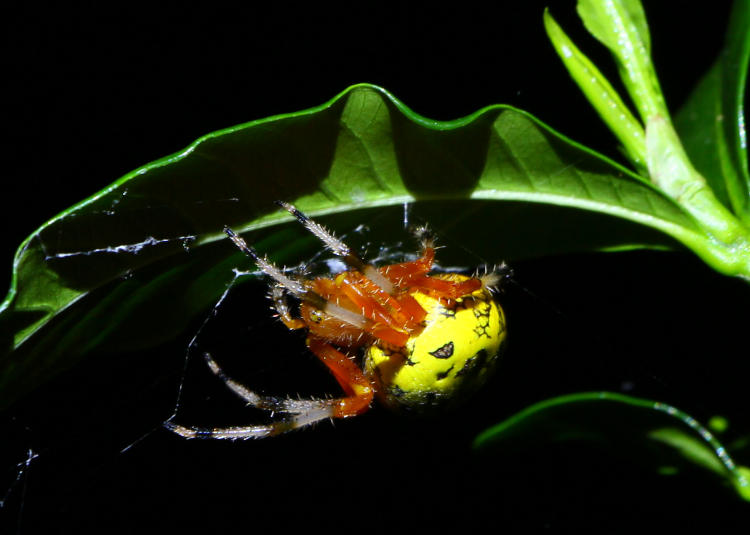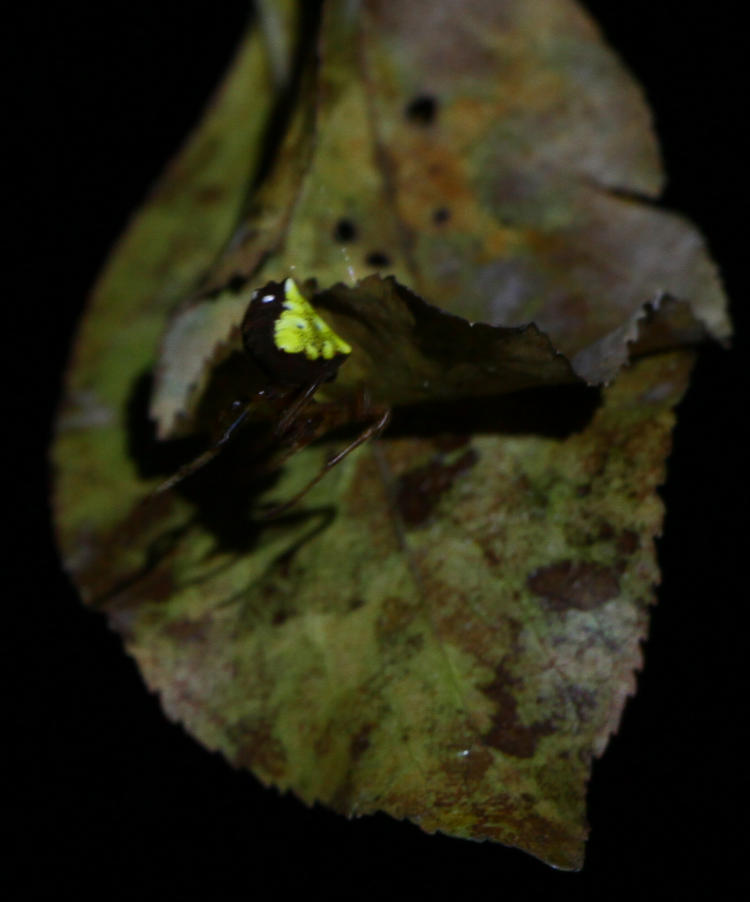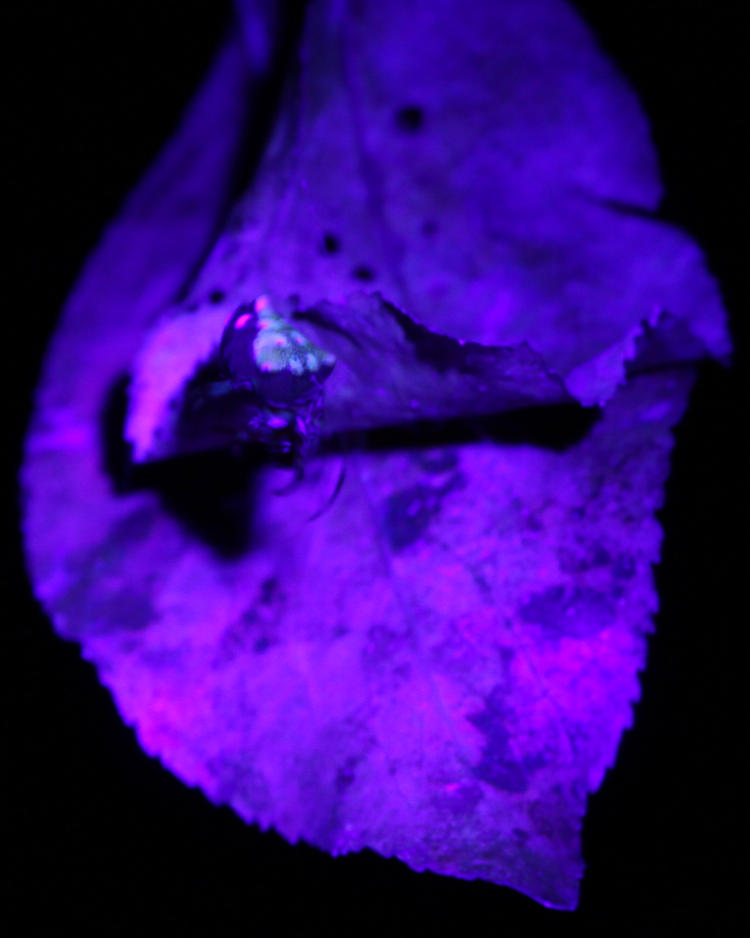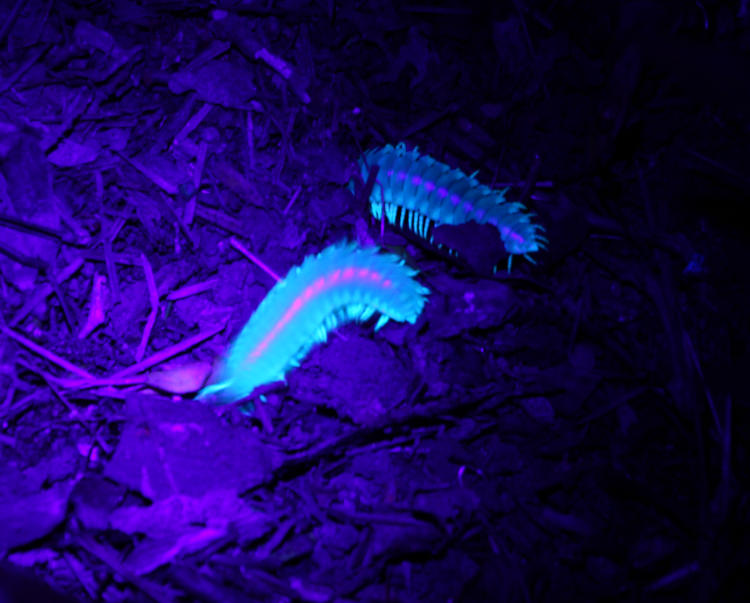A little too similar to last week’s entry, but hey – this is what I shoot, with these being very recent, only hours old.
I mentioned before that my family wasn’t at all ‘current’ with my pursuits, not being internet savvy (or having much interest when they were,) but my brother is getting better in that respect. So he’d never seen some of the older images where I was experimenting with UV fluorescence. After showing him some of those Sunday night, he immediately wanted to see it firsthand, knowing there might be some subjects in the backyard, and though I only had a weak charge in the UV flashlight, we went out looking. Turns out, one subject that he’d discovered earlier worked quite well, and I had to return last night to tackle it properly – more or less, anyway. He’d had to leave that morning so missed all the setting up and back-and-forth bits of it, which was just as well. These were the results.

This is a marbled orbweaver (Araneus marmoreus,) a significantly-sized spider that is uncommon around here – I’d found one in the backyard last year, and never found this one before my brother did. Body length (not counting legs) is close to 20mm, so tucked in like this, it pretty much covers a quarter. This of course in visible light, but under UV like it looks a bit different.

This is what it looks like in the light of the UV flashlight – more or less. The digital sensor seems to have a different sensitivity to UV than our eyes do, where the magenta highlights look more blue. The brilliant purplish hues are simply the visible aspect of the flashlight output, including that enigmatic arrow down the side – it’s not there in other angles, and is merely a reflection. But the greenish hues are fluorescence, something in the chitin of the spider that absorbs UV and re-emits it within the visible wavelengths. This happens in daylight too, but is overwhelmed (to us) by the amount of visible light reflecting from the body. Why some arthropods possess these properties is still a mystery, and it’s not all of them, nor in the same manner, but it’s presumed to attract prey. Research is ongoing.
Attempting to reduce that strong magenta response, I also did a few exposures with a UV filter on on the lens, producing no visible difference. Back in my office, I shone the UV flashlight onto some uranium glass (which fluoresces brilliantly,) through the filter itself and without it, and saw no change whatsoever, so I have to conclude that either the wavelength blocked by the filter is well outside that produced by the flashlight, or my filter is nothing but cheap glass.
Of course, I had to do a more thorough search to see what else I might find. We already knew about the arrowhead spider and even saw some evidence that first night, so I made the attempt.

Arrowhead spiders (Verrucosa arenata) are significantly smaller than the marbled orbweavers, and this one was well above my head, nor was it able to hold still, apparently playing Tetris on its flip-phone. Let’s see what transpired.

Ehhhh, it’s not even clear if there was fluorescence, or if this is just reflections from the glossy body. We thought we saw a distinct line the previous night, but it’s not in evidence here.
However, when I turned and began shining the flashlight around at random, a strong response from the leaf litter nearby was evident, and I quickly uncovered a much better subject.

These are millipedes of the Tribe Apheloriini, but the taxonomy is still being hashed out and I can’t offer a distinct species. These are larvae; the adults have distinctive glossy black bodies with bright yellow legs, and can produce a cyanide-based compound for defense, thus the bright colors. But the larva have a better UV reaction, as I’ve seen before:

One of them refused to hold still and the UV shots require a longer exposure, so we have a little blur from the one. Again, the bright magenta spots are merely reflections, just like in the previous image, but nothing that I’ve found yet beats their fluorescence. This was initially visible from a significant distance and was very bright to my eyes in the darkness. almost as much as some synthetic materials. Notably, this species is rarely seen in daylight and forages among the leaf litter at night, so it likely has no interaction with other arthropods that may be able to spot the fluorescence. But that’s all I can tell you about it, at least until you’re older.




















































